WHAT IS HYSTERECTOMY?
Hysterectomy is a surgical procedure in which women’s uterus (womb) is removed. Uterus is the organ in which the baby grows during pregnancy. After this procedure, a female will no longer have her menstrual periods and cannot become pregnant.
FORM_CODE
QUICK GLANCE ON FEMALE REPRODUCTIVE SYSTEM:
Female reproductive system provides several functions. The internal reproductive organs include
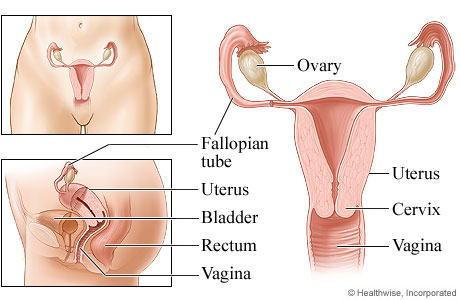
Vagina: It is a canal that joins the cervix (the lower part of uterus) to the outside of the body. Also known as the birth canal.
Uterus (womb): It is a hollow, pear-shaped organ where the fetus develops. Uterus is divided into two parts:
Cervix: It is the lower part that opens into the vagina, and the main body of the uterus, called the
Corpus: It is the main body of the uterus & it expands to hold the developing baby.
Ovaries: These are small, oval-shaped glands that are located on either side of the uterus. They produce eggs and hormones.
Fallopian tubes: These are narrow tubes that are attached to the uterus and they serve as a pathway for the ova (egg cells) to travel from the ovaries to the uterus. Characteristically, the fertilization of an egg by a sperm occurs in the fallopian tubes. This fertilized egg then moves to the uterus, where it implants in the uterine lining.
Know More:
WHEN IS A HYSTERECTOMY REQUIRED?
A hysterectomy is required during the following conditions:
Uterine Fibroids causing severe pain & bleeding.
Long term pelvic pain
Uterine prolapse that is sliding of the uterus from its normal position into the vaginal canal.
Endometriosis (A disorder in which tissue that normally lines the uterus grows outside the uterus).
Abnormal vaginal bleeding
Cancer of the uterus, cervix ,ovaries or fallopian tubes
Adenomyosis or thickening of the uterus
TYPES OF HYSTERECTOMY
On the basis of how much of the uterus has to be removed, there are three types of hysterectomy which are mentioned below: .
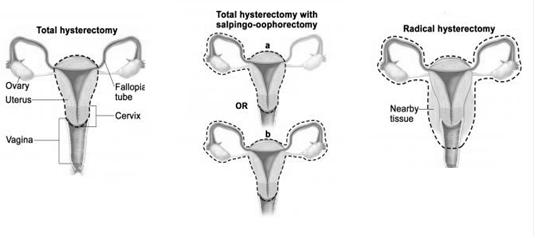
Partial or supracervical hysterectomy: upper part of the uterus is only removed, keeping the cervix intact.
Complete or total hysterectomy: In this the whole uterus & cervix are removed. This is most commonly performed.
Radical hysterectomy: It is an extensive procedure in which the uterus, cervix, ovaries, fallopian tubes, upper vagina, some surrounding tissues & lymph nodes are removed. It is mostly done when a patient is suffering from cancer.
Hysterectomy with bilateral salpingo-oophorectomy: in the uterus, cervix, fallopian tubes, and ovaries are removed.
TYPES OF HYSTERECTOMY PROCEDURES
They are three main types of hysterectomy procedures:
ABDOMINAL HYSTERECTOMY (AH):
In this procedure (AH) an incision is made on the abdominal wall (tummy), which is approximately 5 inches long, cutting through the skin & connective tissue to the uterus. The cut can either be made horizontally along the bikini line, or vertically from the belly button to the bikini line (Known as a bikini-line incision).
Vertical incision is mostly made if there are large fibroids (non-cancerous growths) in the womb, or for some types of cancer. Once the womb has been removed, the incision is stitched up.
The procedure takes about an hour to complete and is performed under general anesthesia.
Recommended:
When the womb is enlarged by fibroids or pelvic tumors and it's not possible to remove it through your vagina.
If the ovaries need to be removed.
Advantages:
There is a complete, unobstructed look at the uterus and surrounding area during the surgery.
Disadvantages
Longer recovery time & intensity of pain is more severe as compared to the other procedures.
It gives a large scar.
VAGINAL HYSTERECTOMY (VH):
This is considered as the standard procedure for removing uterus. In this procedure, a small incision is made at the top of the vagina. With this incision, uterus (and cervix, if necessary) is separated from its connecting tissue and blood supply and removed through the vagina. If the cervix is not to be removed, then the incision is made around the cervix, which is then reattached when the surgery is finished.
Recommended:
Uterine prolapse
Advantage:
Healing is faster
Less pain
No external scarring
Disadvantage:
Less operating area, because of which there is limited access to other organs in the pelvic region.
LAPAROSCOPIC HYSTERECTOMY (LH):
Also known as key-hole surgery, is the preferred method for removing the organs & the surrounding tissues. In this procedure special surgical tools are used to operate through small incisions made in the abdomen and vagina.
During the procedure, a small tube containing a telescope (laparoscope) and a tiny video camera is inserted through a small incision into the abdomen. This will provide a clear access to the internal organs. Instruments are then inserted through the other small incision that were made in the abdomen or vagina to remove the womb, cervix and any other parts of the reproductive system.
Recommended: 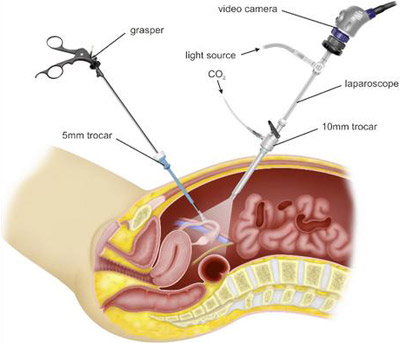
Endometriosis
Large uterus
Advantages
Less pain
Faster recovery
Shorter stay in the hospital
Fewer surgical complications
Minimum scarrin
GETTING PREPARED FOR THE SURGERY
For getting ready for the procedure, it is very important for the patient to be fit & healthy. Following steps should be taken before going for the procedure:
Exercise regularly
Quit smoking
Have a healthy and balanced diet
Lose weight, if the patient is overweight
ONCE IN THE HOSPITAL:
Before the procedure, following things will be done:
Blood and urine sample will be taken for testing
Patient may receive an enema
Abdominal and pelvic areas may be shaved (or partly shaved)
Antibiotics will be given
A urinary catheter will be placed in the bladder
HYSTERECTOMY RECOVERY
After the procedure, patient will wake up tired & have pain. They will be prescribed pain medications to give them relief from pain. They will also feel the need to empty the bowl frequently.
PATIENT WILL HAVE:
Dressings placed over the wound
Drainage tube in the abdomen (if the patient has an abdominal hysterectomy) to take away any blood from beneath the wound – these tubes usually stay in place for one to two days
A gauze pack inserted into the vagina (if the patient has vaginal hysterectomy) to minimize the risk of bleeding, this usually stays in place for 24 hours
HYSTERECTOMY RECOVERY TIME
Duration of stay in the hospital will depend on the patient’s age & health. After a VH, patient is discharged after 3-4 days. Whereas those who have gone for an AH, will be discharged after 4-6 days.
PATIENT WILL BE ADVISED:
To walk
Not to put anything in the vagina, for a minimum of 6 weeks after the procedure.
For the initial 6-8 weeks, patient is advised not to pick up any heavy thing or do any physically straining household work.
Patient is advised to rest as much as possible for the initial 6 weeks.
HYSTERECTOMY RISKS
Hysterectomy procedure is considered to be a safe procedure but it can cause major and minor complications:
Painful wind: This will gradually get better.
Brownish – red vaginal discharge: This is a normal discharge which will be present till 4 weeks.
Body weight : Lot of women gain weight after hysterectomy
Emotional & psychological effects: Lot of women feel stressed out & depressed after the surgery.
Menopausal symptoms: Females who have got their ovaries removed will experience menopausal symptoms for about 3- 4 days.
Decline in memory & cognitive skills
Other effects :
Infection
Bleeding - possibly during or after surgery
Bowel blockage
Urinary tract injury
Anesthesia problems
Blood clots in the lungs or veins
MYTHS & FACTS
Myth: If someone had a hysterectomy, they will need to take at least 6 weeks off from work to recover.
Fact: These days minimally invasive surgery (laparoscopic surgery) is performed so that a patient can return to normal activity as their body permits. Patient feels better within two weeks after this surgery.
Myth: Hysterectomy can cause menopause.
Fact: Hysterectomy removes only the uterus, and has nothing to do with the ovaries. It’s the ovaries and not the uterus, which provides estrogen. At times ovaries are removed at the time of hysterectomy, but that is not the part of the procedure.
Myth: There will be a big empty space where the uterus was.
Fact: If the uterus is removed, the bowel falls into the space formerly occupied by the uterus. Hence there will be no “empty space.”
Myth: Hysterectomy is the only option.
Fact: It is very important to understand that hysterectomy is never an option for a person who is uncertain, on whether their family is complete or not. Secondly, some patients may pose such an anesthetic risk that all options should be explored before resort to hysterectomy.
HEALTHY LIFESTYLE AFTER HYSTERECTOMY
It is very important to keep yourself fit after the procedure. By following these simple things after the procedure, patient can maintain their fitness & wellness:
Increase fiber intake
Drink plenty of water
Opt for healthy protein & fat food
Exercise regularly
Enough of sleep & rest
REFERENCES
http://www.nhs.uk/conditions/hysterectomy/Pages/Introduction.aspx
http://www.webmd.com/women/guide/hysterectomy
http://www.healthcommunities.com/gynecologic-surgery/types-surgical-procedures-hysterectomy.html
http://www.medscape.com/viewarticle/712569_5
https://innovativegyn.com/hysterectomy-myths-and-facts-part-2-changes-to-my-body/
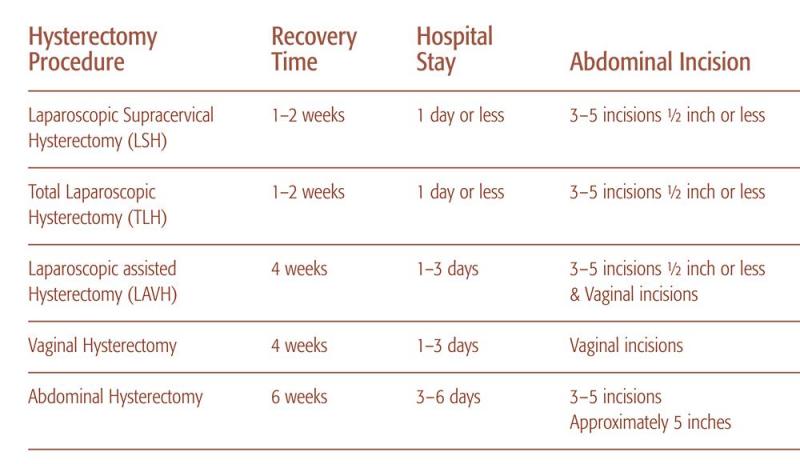

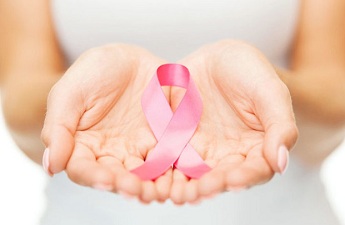
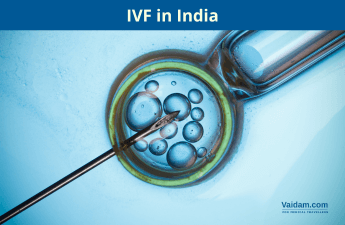




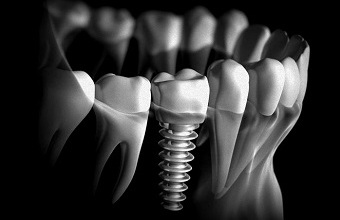
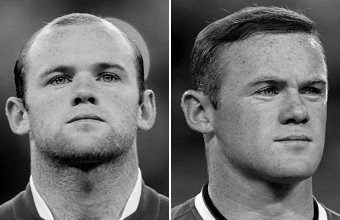

 Vaidam is NABH certified healthcare discovery platform that will connect you to top-notch medical experts, hospitals, wellness options, and trusted travel partners to help identify and make the right healthcare choices.
Vaidam is NABH certified healthcare discovery platform that will connect you to top-notch medical experts, hospitals, wellness options, and trusted travel partners to help identify and make the right healthcare choices. You can search for the best hospitals in India to treat cancer and ailments of the heart, bones or kidney, read about them, view photographs of the facilities at the hospitals and the places at which the hospitals are located, and check the cost of treatment.
You can search for the best hospitals in India to treat cancer and ailments of the heart, bones or kidney, read about them, view photographs of the facilities at the hospitals and the places at which the hospitals are located, and check the cost of treatment. As soon as you post an enquiry, the patient relation team will collect details from you, share them with the doctors and hospitals on Vaidam's panel, and get a personalized treatment plan. We research to get quality treatment within your budget.
As soon as you post an enquiry, the patient relation team will collect details from you, share them with the doctors and hospitals on Vaidam's panel, and get a personalized treatment plan. We research to get quality treatment within your budget. Vaidam concierge assists patients, to get medical Visa to travel to India, the best airline fares and arrangements for your stay. Our concierge also helps you with daily travel, language, and food concerns. Vaidam does everything to be your perfect host. All of Vaidam’s services are free of cost to patients.
Vaidam concierge assists patients, to get medical Visa to travel to India, the best airline fares and arrangements for your stay. Our concierge also helps you with daily travel, language, and food concerns. Vaidam does everything to be your perfect host. All of Vaidam’s services are free of cost to patients. If you are looking for medical care in India (New Delhi, Mumbai, Chennai, Hyderabad or Ahmedabad) or in Turkey (Istanbul,Ankara or Antalya), Vaidam Health has a network in each of those cities.
If you are looking for medical care in India (New Delhi, Mumbai, Chennai, Hyderabad or Ahmedabad) or in Turkey (Istanbul,Ankara or Antalya), Vaidam Health has a network in each of those cities.
